Service History
The
Australasia was launched on September 17, 1884, from the James Davidson shipyard in West Bay City, Michigan. Construction of the 285-foot wooden bulk carrier was accomplished with a crew of 150 men at a cost of $150,000. The
Australasia was the largest wooden ship built at the time, and its launch was accompanied by much fanfare. It was powered by the largest engine on the Great Lakes: a fore-and-aft compound engine with a 30-inch high-pressure cylinder, 54-inch low pressure cylinder, and a 45-inch stroke. The engine was powered by two Otis steel boilers measuring 8 feet tall and 27 feet long. Throughout its service career, the
Australasia carried bulk cargoes across the Great Lakes so efficiently that it competed with larger, more modern steel ships at a time when wooden vessels were becoming obsolete.
The
Australasia generally towed a large wooden schooner barge as its consort, as with many other Davidson steamers. This gave the wooden vessels a competitive edge over larger steel bulk carriers. Working in tandem, a wooden steamer towing a consort could carry between 7,500 and 8,500 tons without a significant increase in operating costs. Technological advances gave bulk carriers enough power to efficiently tow one or more consorts—essentially doubling or tripling the cargo load per trip.
On October 3, 1884, it arrived in Milwaukee on its maiden voyage laden with 3,150 tons of salt; this was the largest cargo ever carried by a Great Lakes vessel. It continued to transport salt, coal, and other cargo for the next twelve years. On April 26, 1889, the
Australasia became stranded at Gull Rock, Michigan Island, in Lake Superior. The tug
Record aided in freeing the vessel, however the
Australasia was badly damaged. Weeks later, on May 8, it was towed by the tug
Mocking Bird to Cleveland, Ohio; total damages were estimated to $11,000. The ship underwent repairs and returned to operation three weeks later.
In 1893, the Corrigan Transit Company was organized and ownership of the
Australasia was transferred to the company. Under the new corporation, James Corrigan operated the steamers
Australasia,
Bulgaria,
Caledonia, and
Italia, alongside the schooner
Northwest during the 1894 season. Captain J.W. Morgan took command of the
Australasia. The
Australasia collided with the steamer
Majestic in the Chicago River on November 1, 1894; estimates for repair exceeded $2,000, and a lengthy investigation ensued. In March 1896, the Illinois Northern District Court in Chicago reached a ruling that the
Majestic was at fault in the collision.
Final Voyage
Early on the morning of Octover 17, 1896, the
Australasia passed through the Straits of Mackinac on a trip from Cleveland to Milwaukee, laden with 2,200 tons of soft coal. After clearing the Manitou Islands, the ship headed across the lake to seek shelter along Wisconsin's shoreline from a strong northeast wind. At approximately 6pm, the
Australasia's crew found the Wisconsin shoreline near Baileys Harbor. A lookout at the nearby lifesaving station spotted flames on the vessel; lifesavers quickly launched their boats, raised canvas, and began pursuit of the
Australasia. Aboard the ship, some of the crew was at dinner when the fire was discovered beneath the main deck. They were only able to successfully deploy one fire hose, and the half-hearted effort to extinguish the fire allowed the flames to climb the bulkhead separating the cargo hold from the engineering spaces. The boiler furnaces were quickly abandoned.
The captain, Captain Pringle, steered the vessel for shore, and the
Australasia struck bottom south of Jacksonport near Cave Point. Under Captain Pringle's order, the seventeen-man crew bore holes through the forward hull to fill the vessel with water before abandoning ship, in an attempt to save the bulk of the cargo. The crew then lowered the jollyboat and fled the vessel, two hours after discovery of the fire aboard. They rowed to Jacksonport and were received warmly by the local farmers.
Captain James Tufts and his tug
John Leathem arrived at Jacksonport at 10:30pm that night; Captain Pringle and his crew rowed out to meet the tug. The
John Leathem arrived at the
Australasia four miles off of Jacksonport. Crew members of the
John Leathem reported the dinner table still set in the galley; not wanting to waste any food, they ate a quick meal before inspecting the fire damage. After discovering significant pressure in the boilers, the crew determined to pull away from the wreck in case of explosion. Attempts by the
John Leathem to tow the
Australasia began around midnight, although the tow line broke eight times. Captain James Tufts feared the burning vessel would sink before reaching port, so he instead dragged the hulk onto the beach south of Cave Point the following morning.
The
Australasia was valued at $85,000 at the time of its wreck and was fully insured by the Chicago agency of C.A. McDonald & Co. The fire was finally extinguished by the
John Leathem, joined by the tug
Wright, on the afternoon of October 18. Two days later, Captain C.H. Sinclair took photographs of the wreck for the C.A. McDonald agency with a Kodak camera obtained especially for the purpose. The
Australasia was determined to be a total loss. Most of the coal cargo was sucked from the wreckage with a steam pump and hauled away on barges; despite this effort, an estimated 140 tons of coal washed ashore and was collected by local farmers, who used it to heat their homes.
Today
As the
Australasia was declared a total loss, most of the cargo and machinery was salvaged. Immediately following the accident, divers were hired to first recover the smokestacks, followed by the engine head, anchors, chains, and other ironwork. During the summer of 1897, the boilers and other remaining equipment was removed. The remaining wreckage lies 350 yards off of the Whitefish Dunes State Park beach in Door County, Wisconsin. Only the extreme ends of the vessel are visible; the majority of the hull structure is buried beneath the sand bottom. Due to its proximity to shore, the
Australasia is subjected to large amounts of sand transport, which obscures and reveals parts of the buried vessel throughout time.
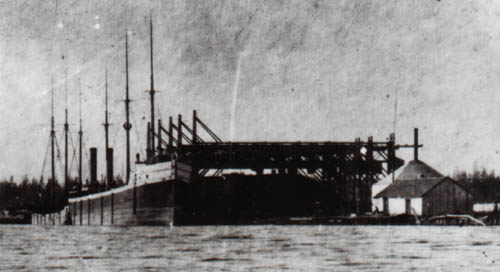
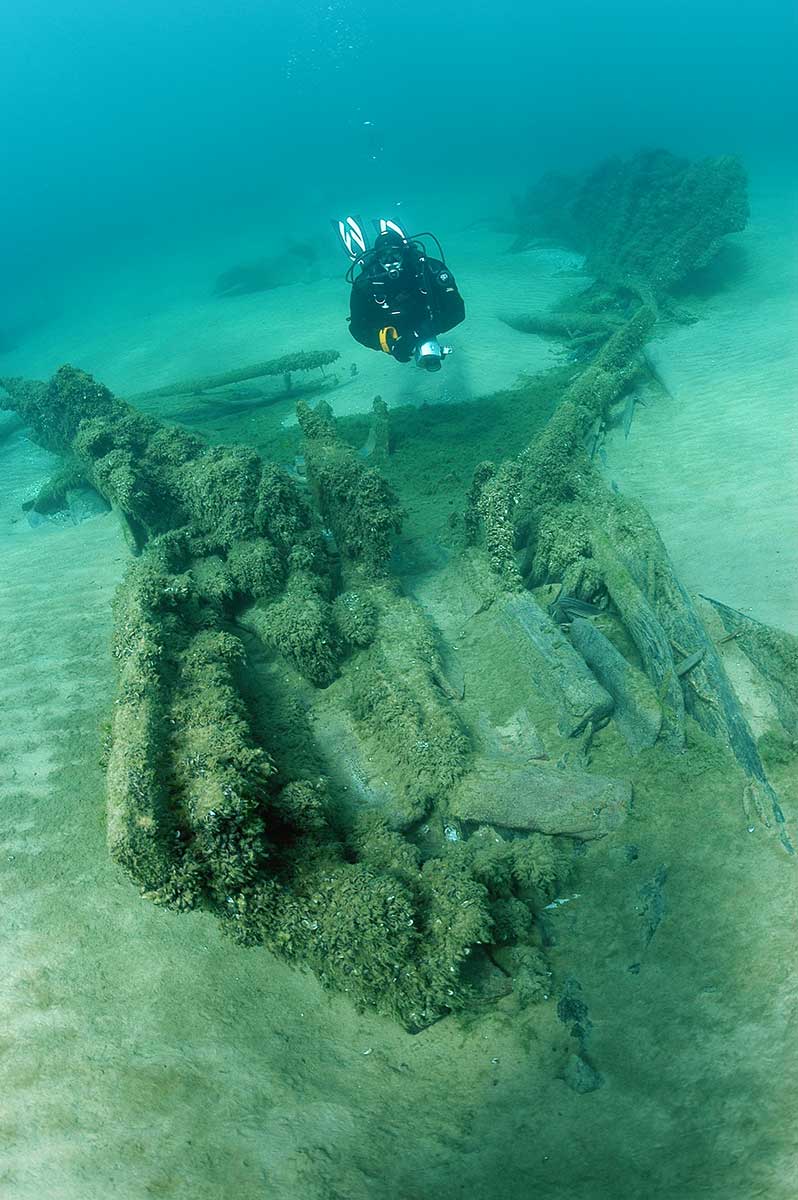
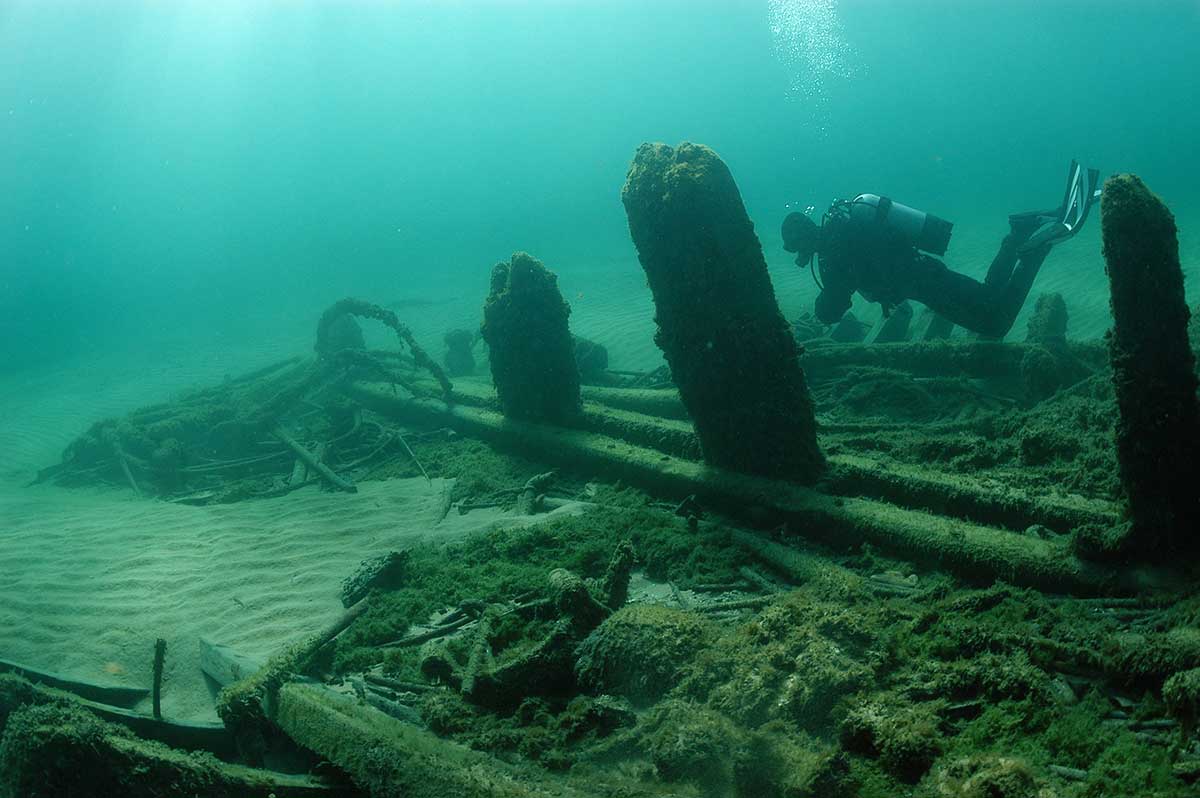
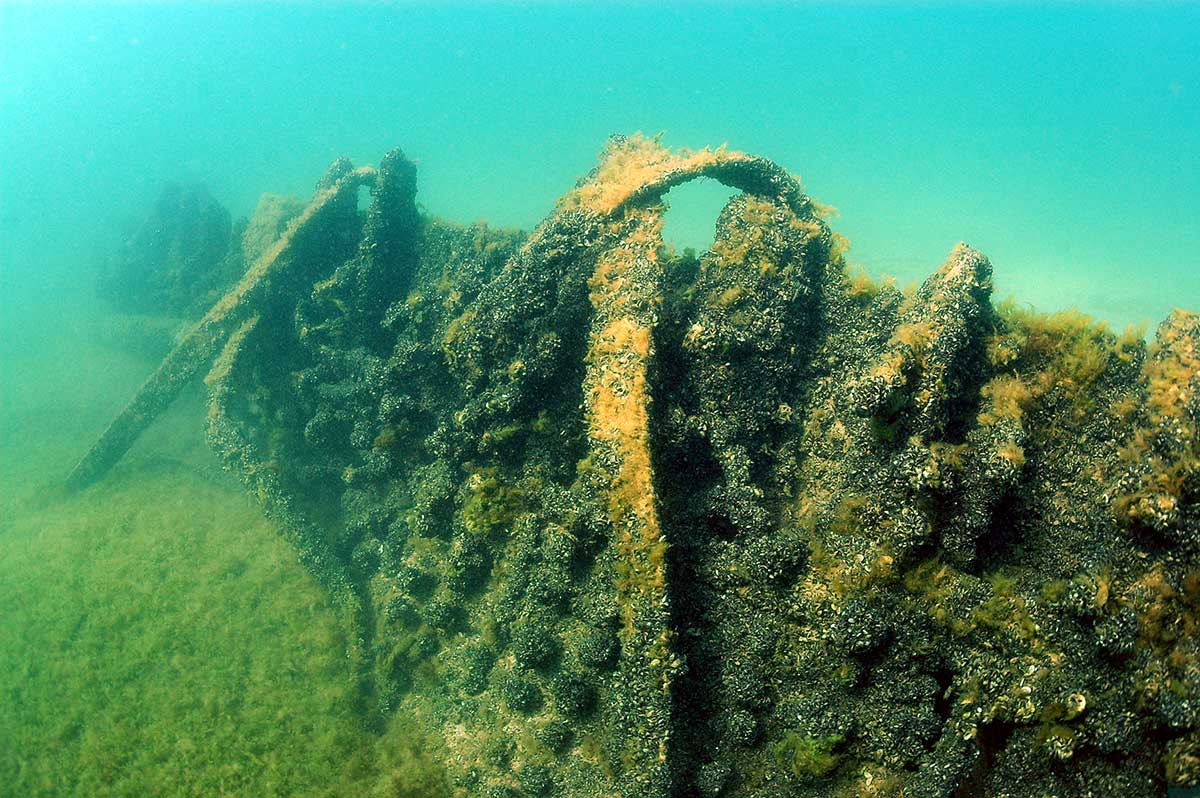
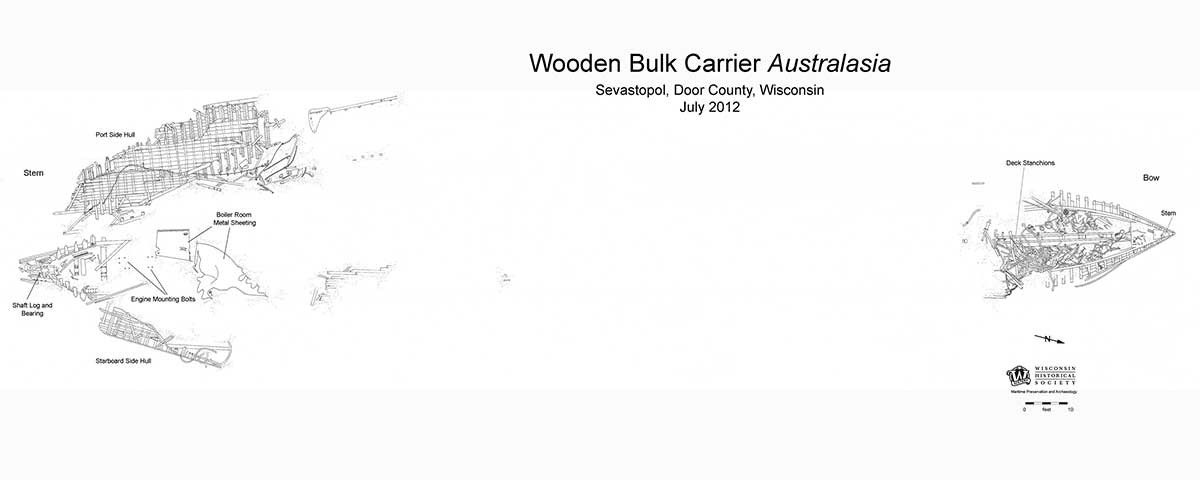

 Confirmed Location
Confirmed Location
 Unconfirmed location
Unconfirmed location